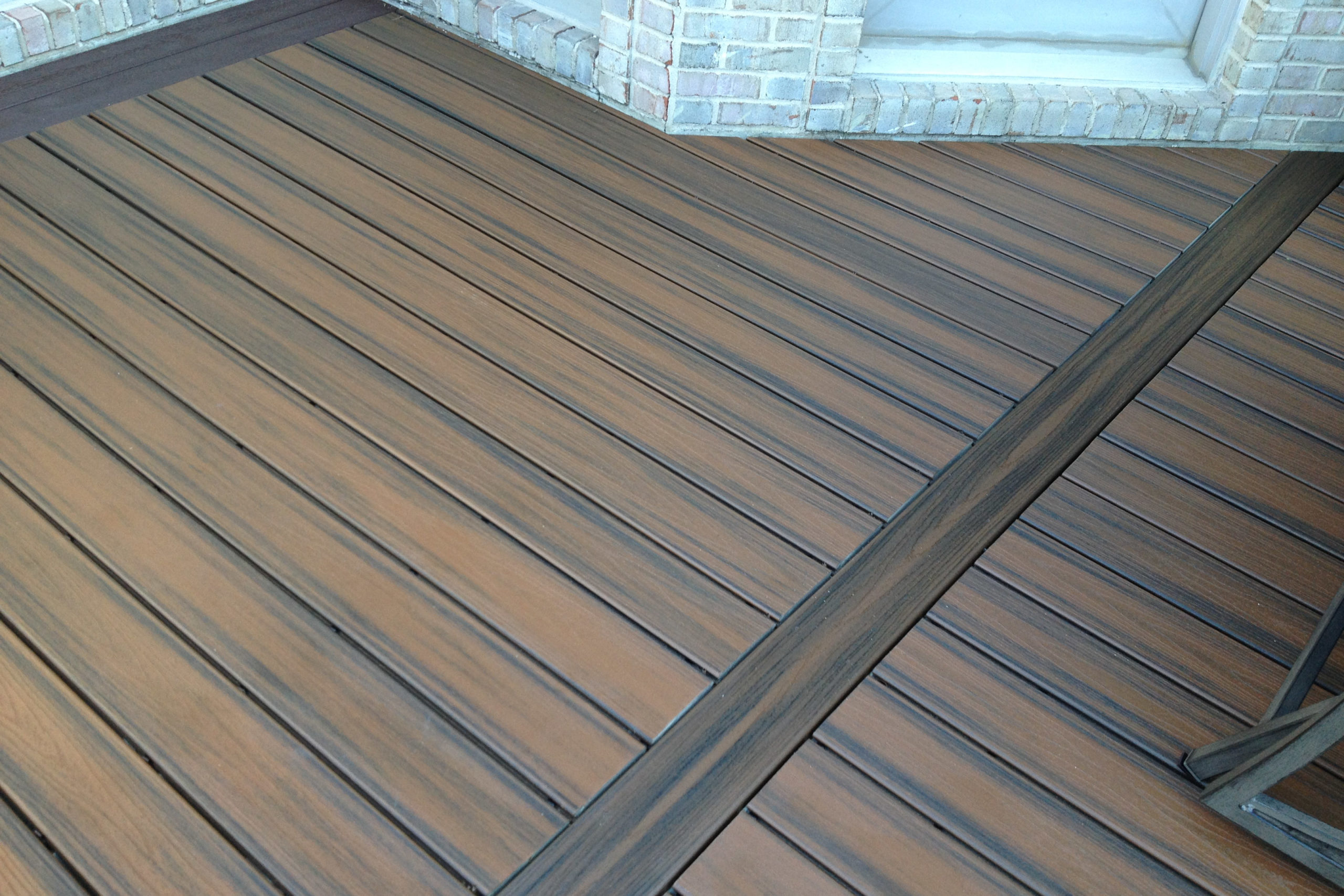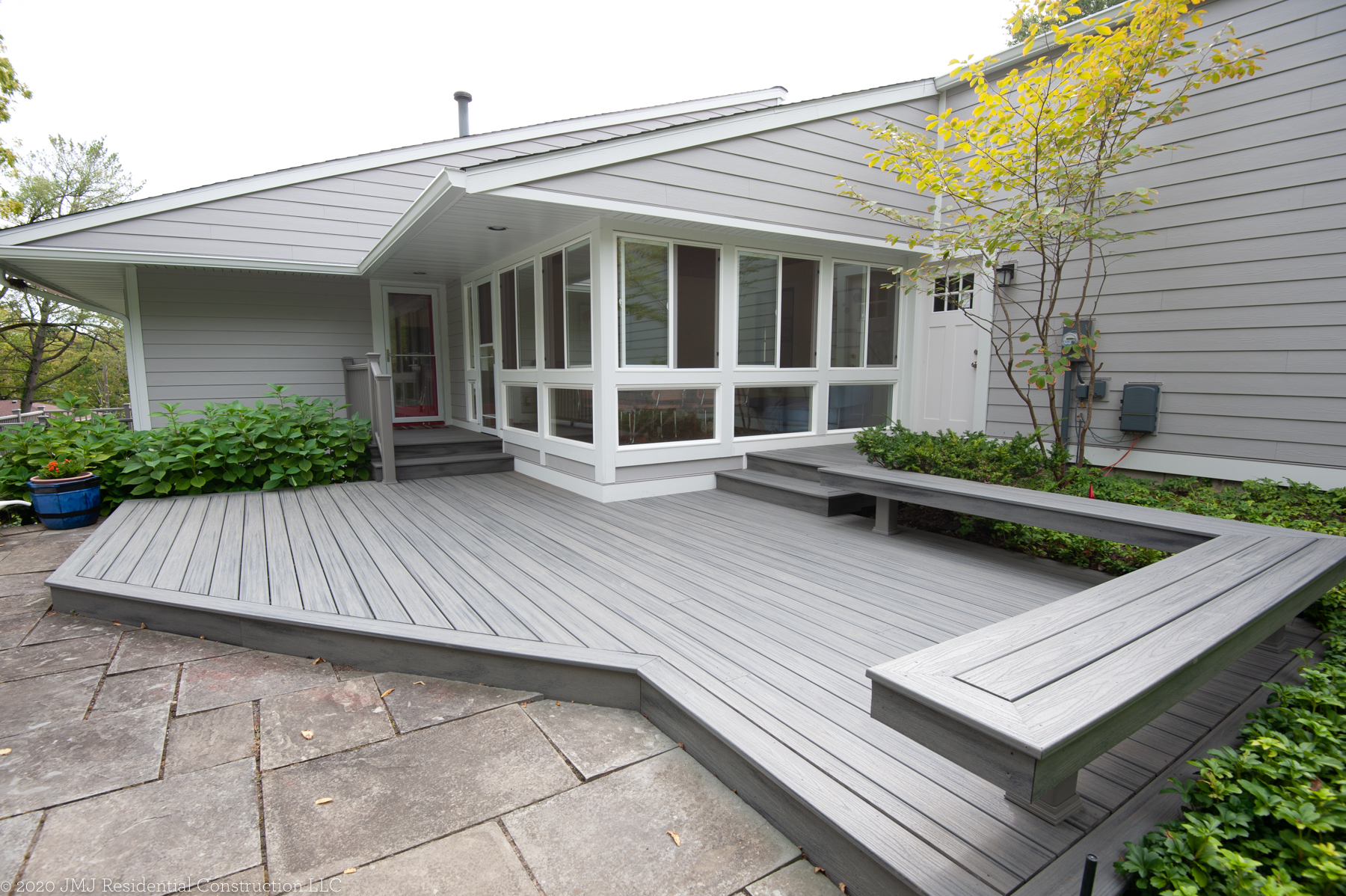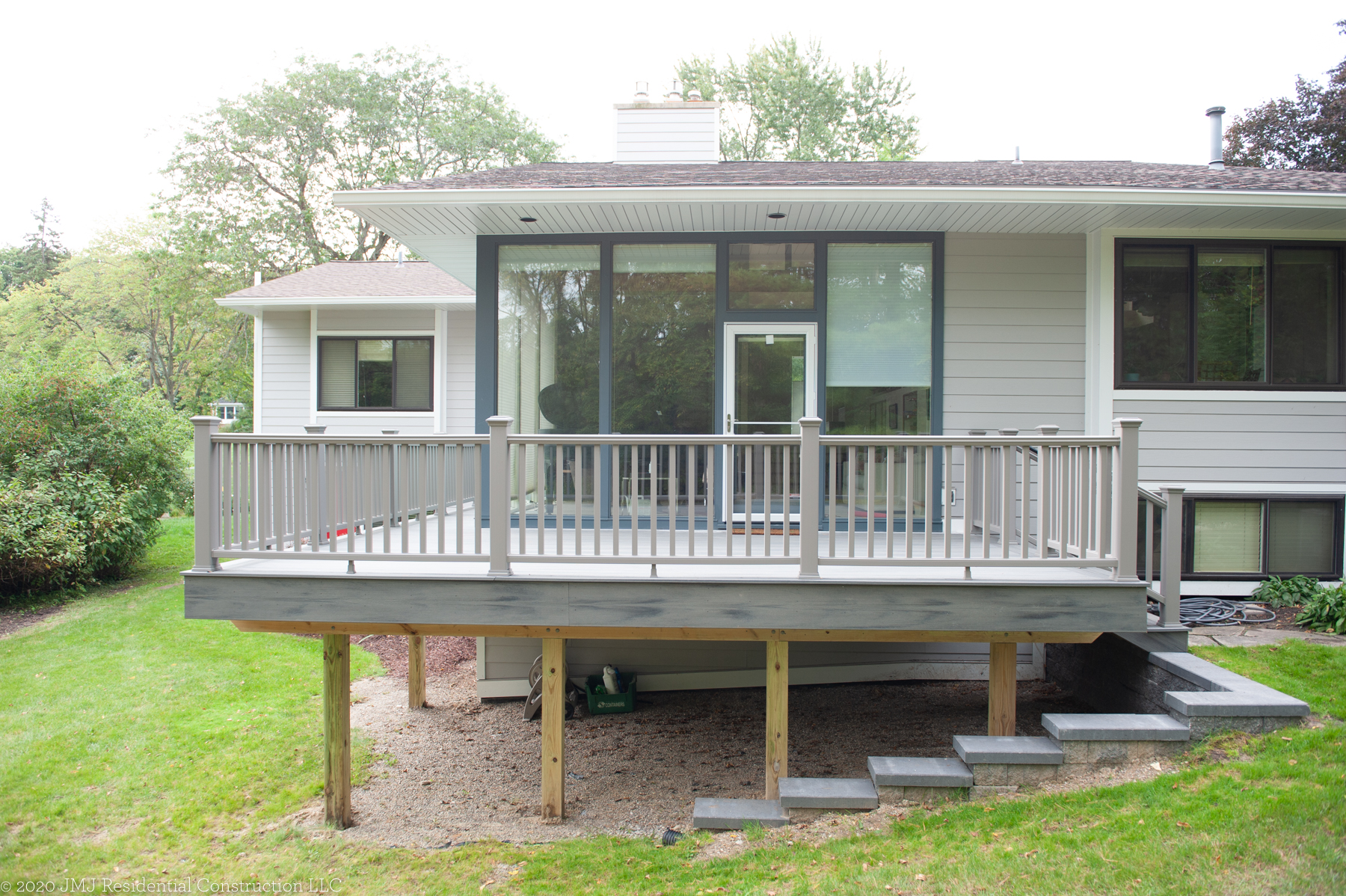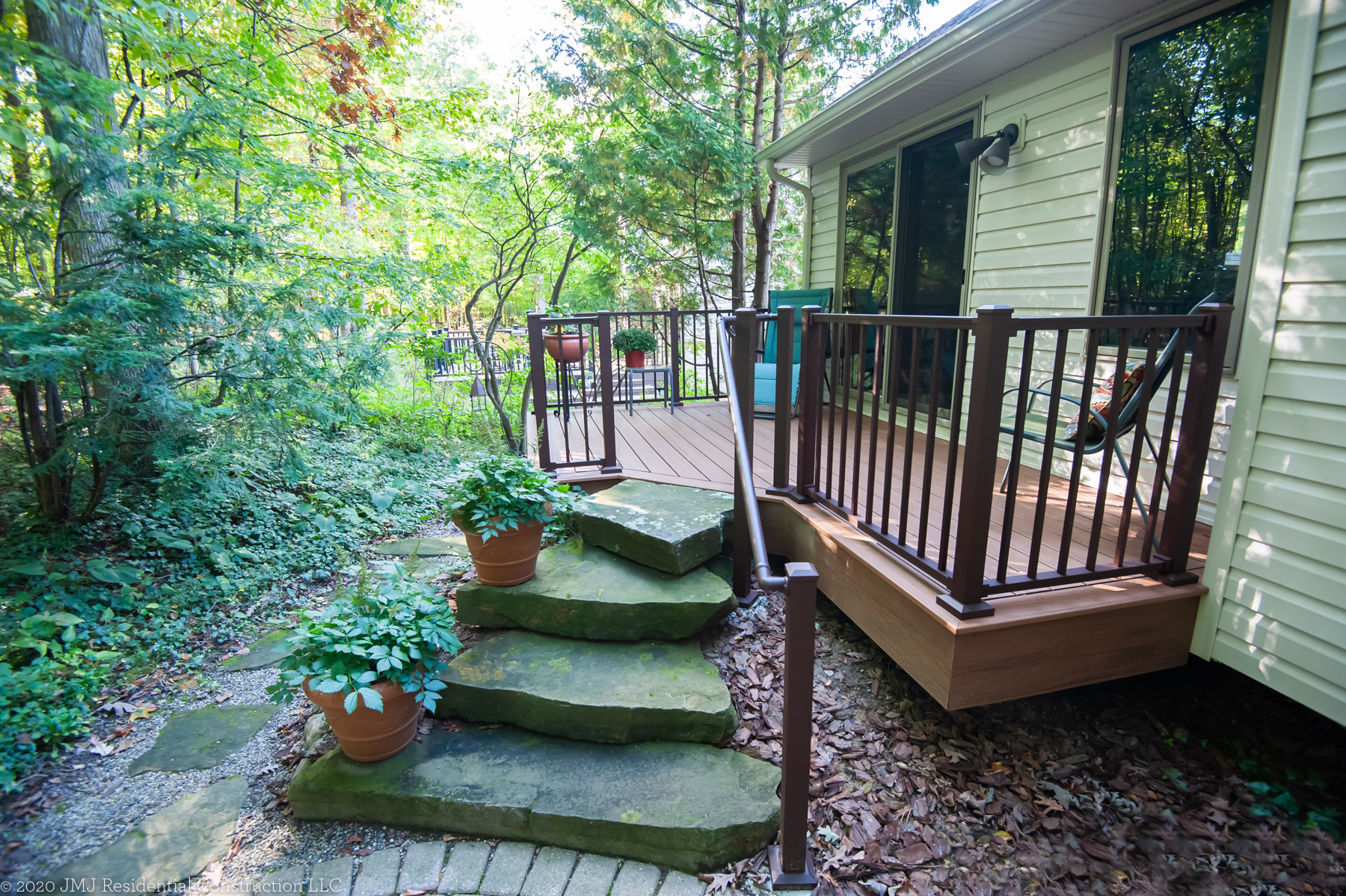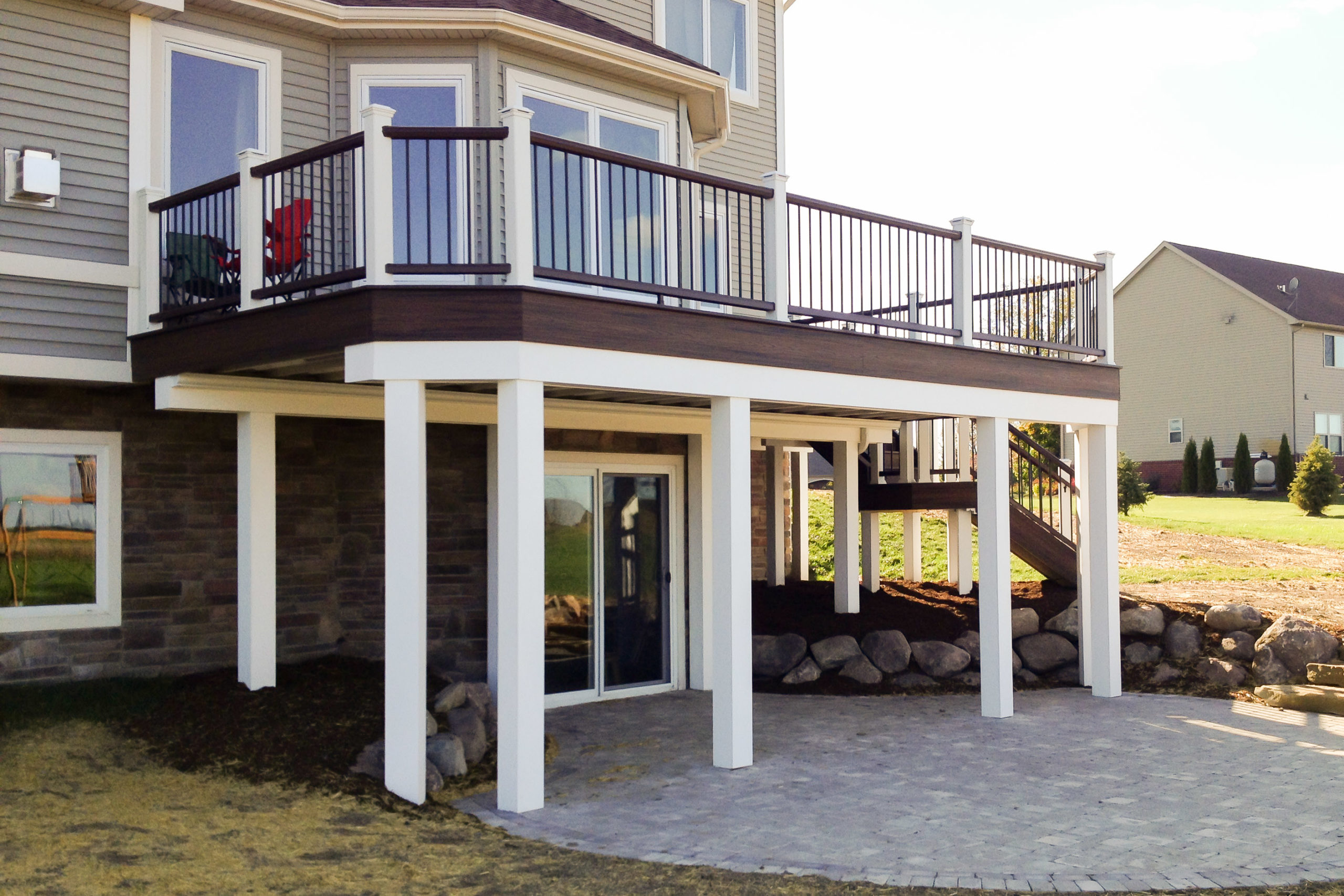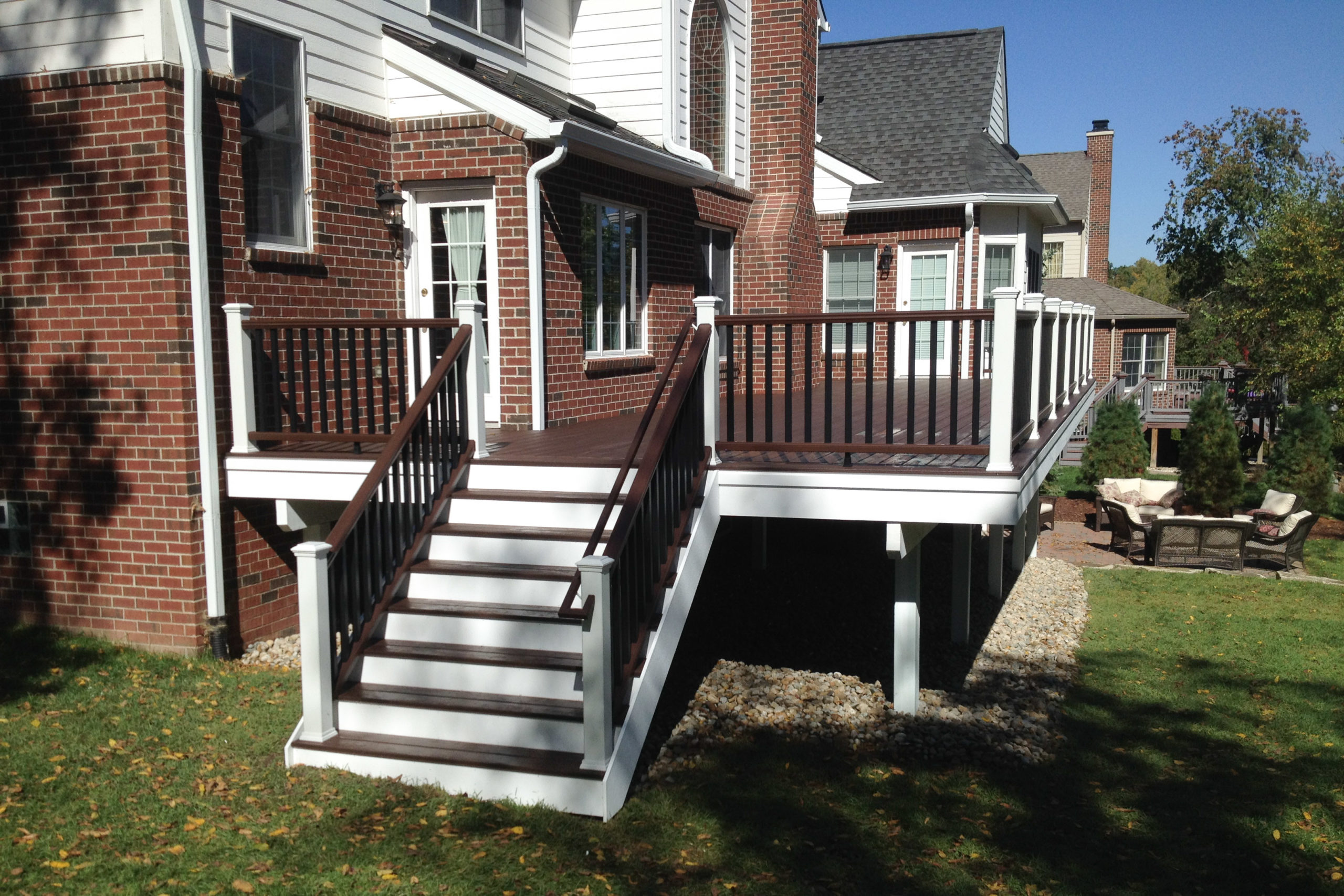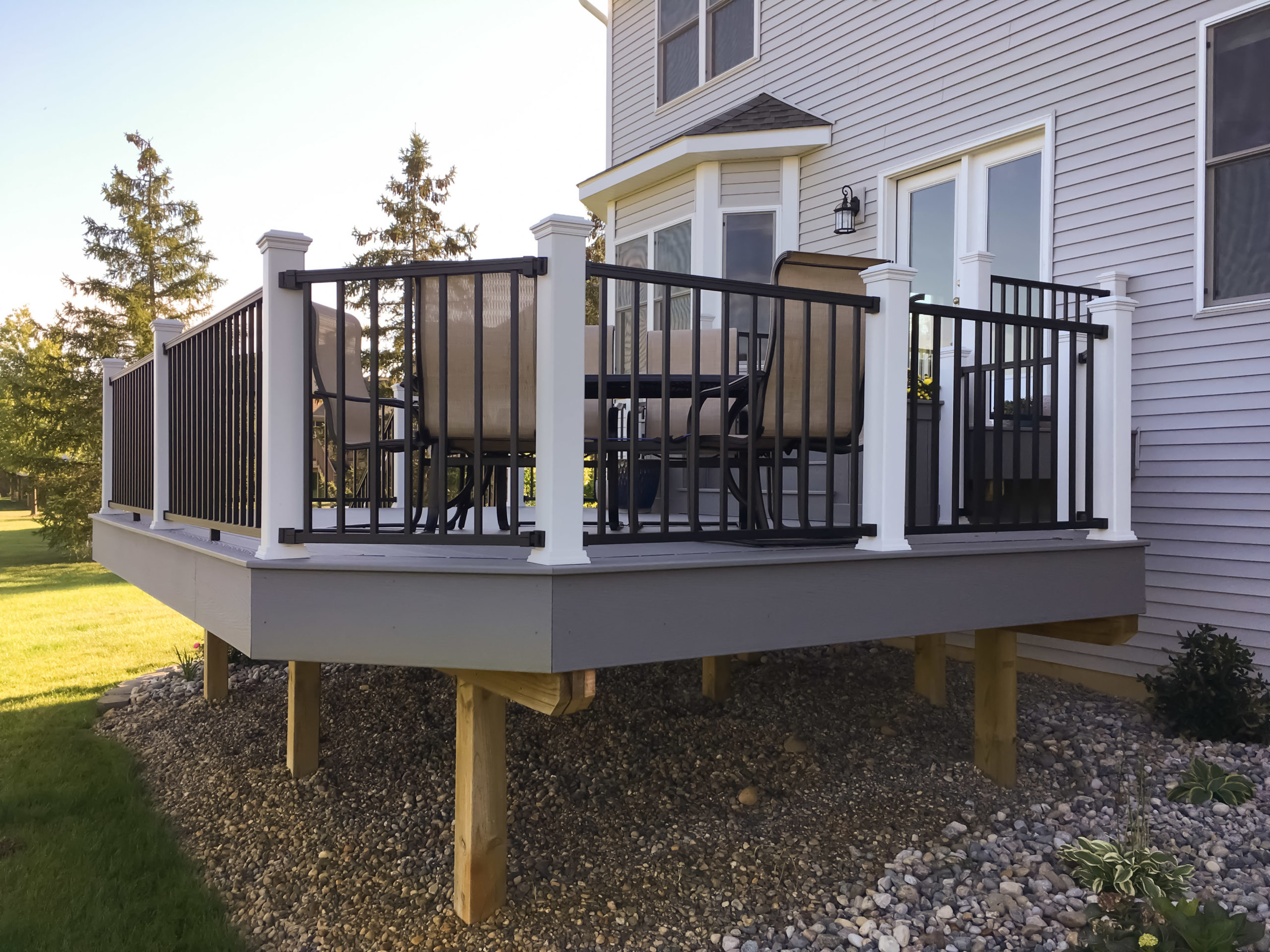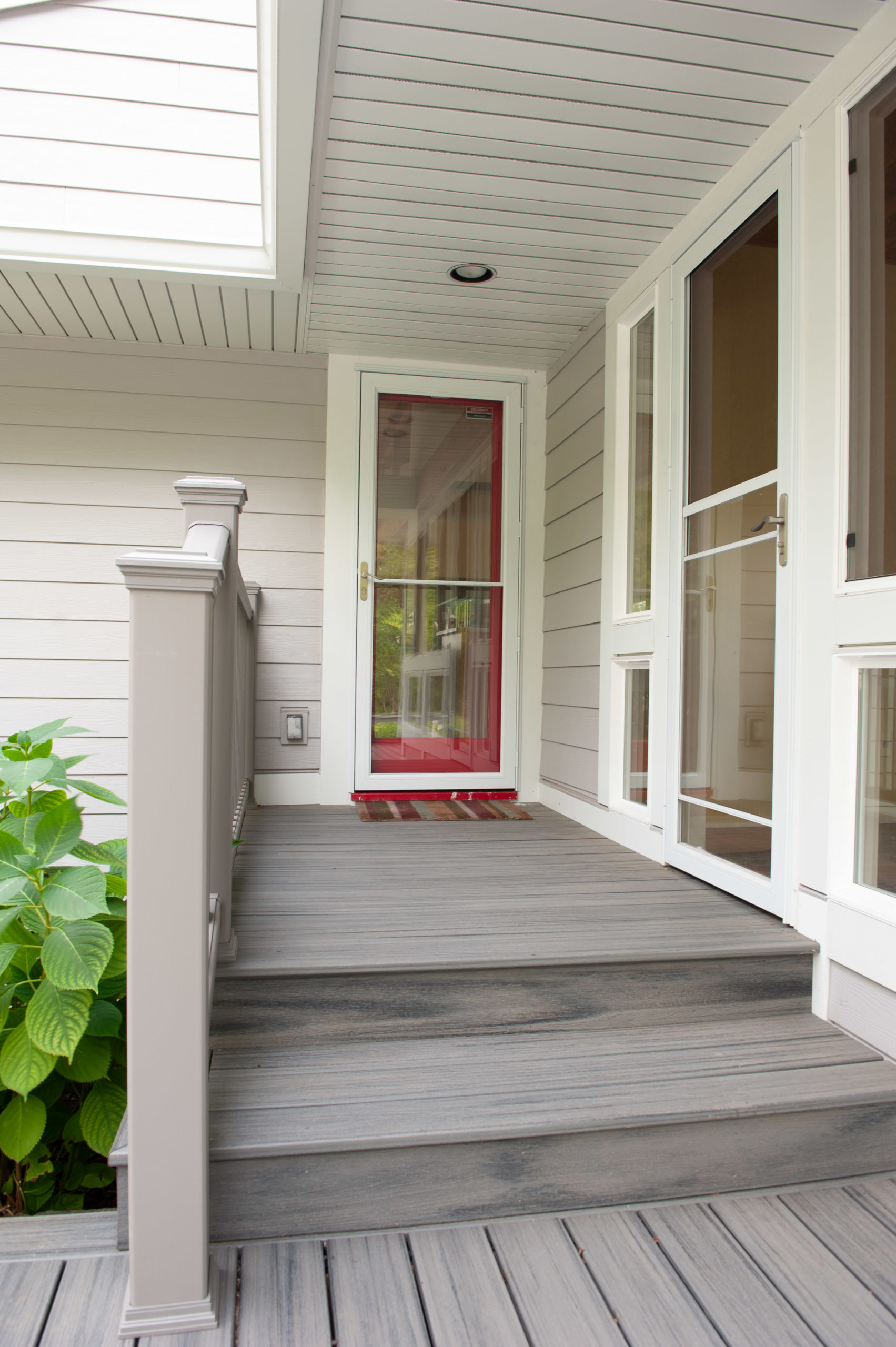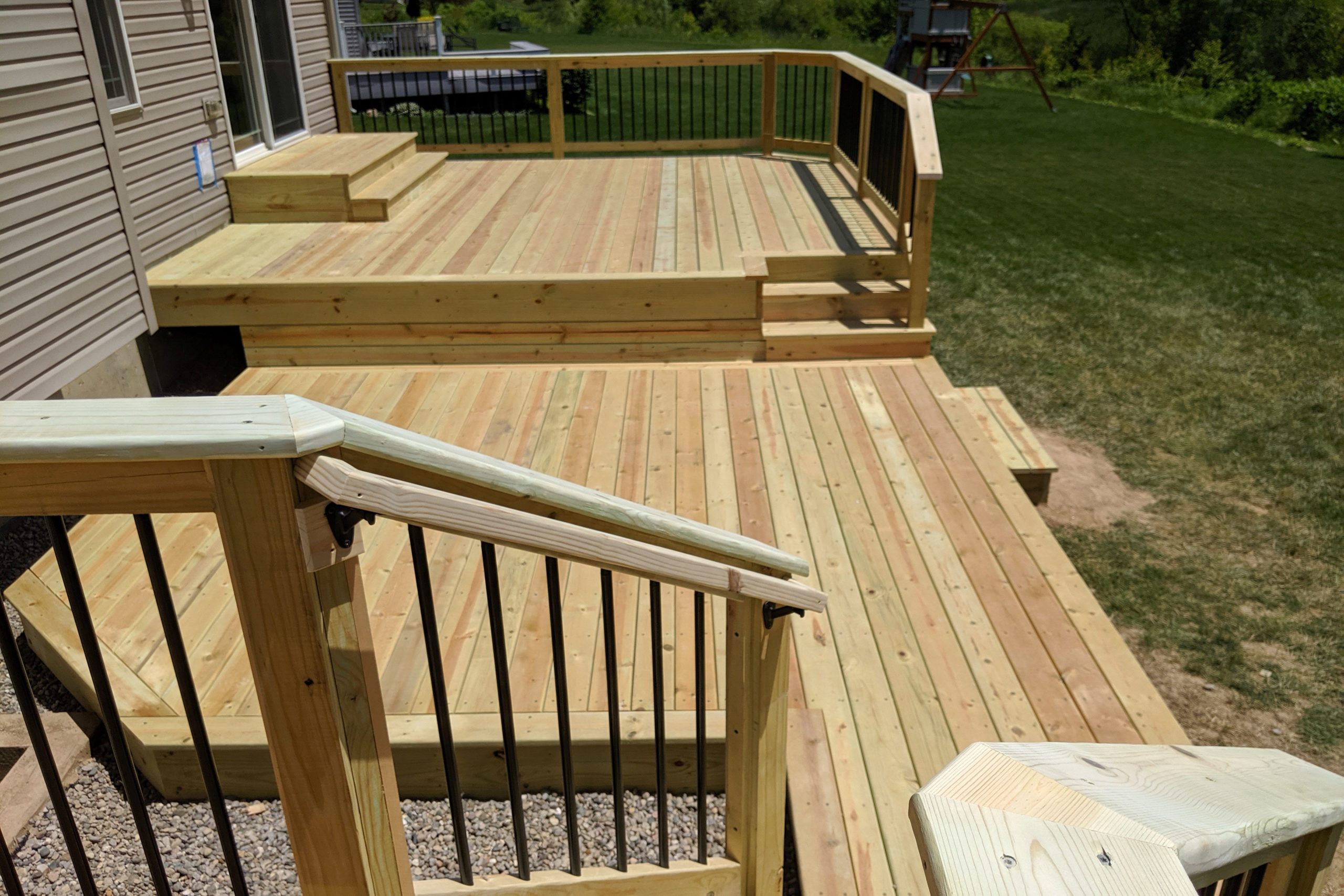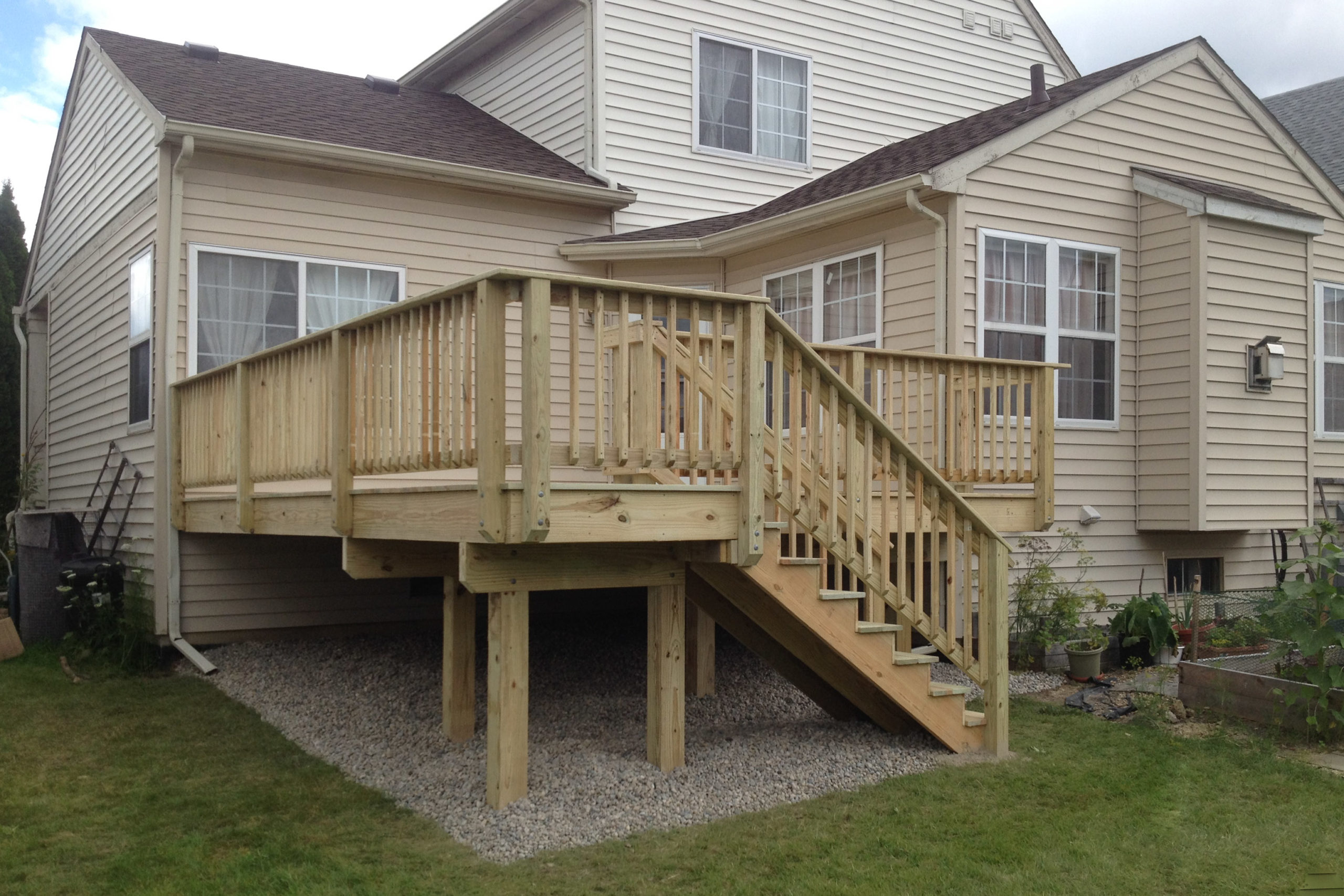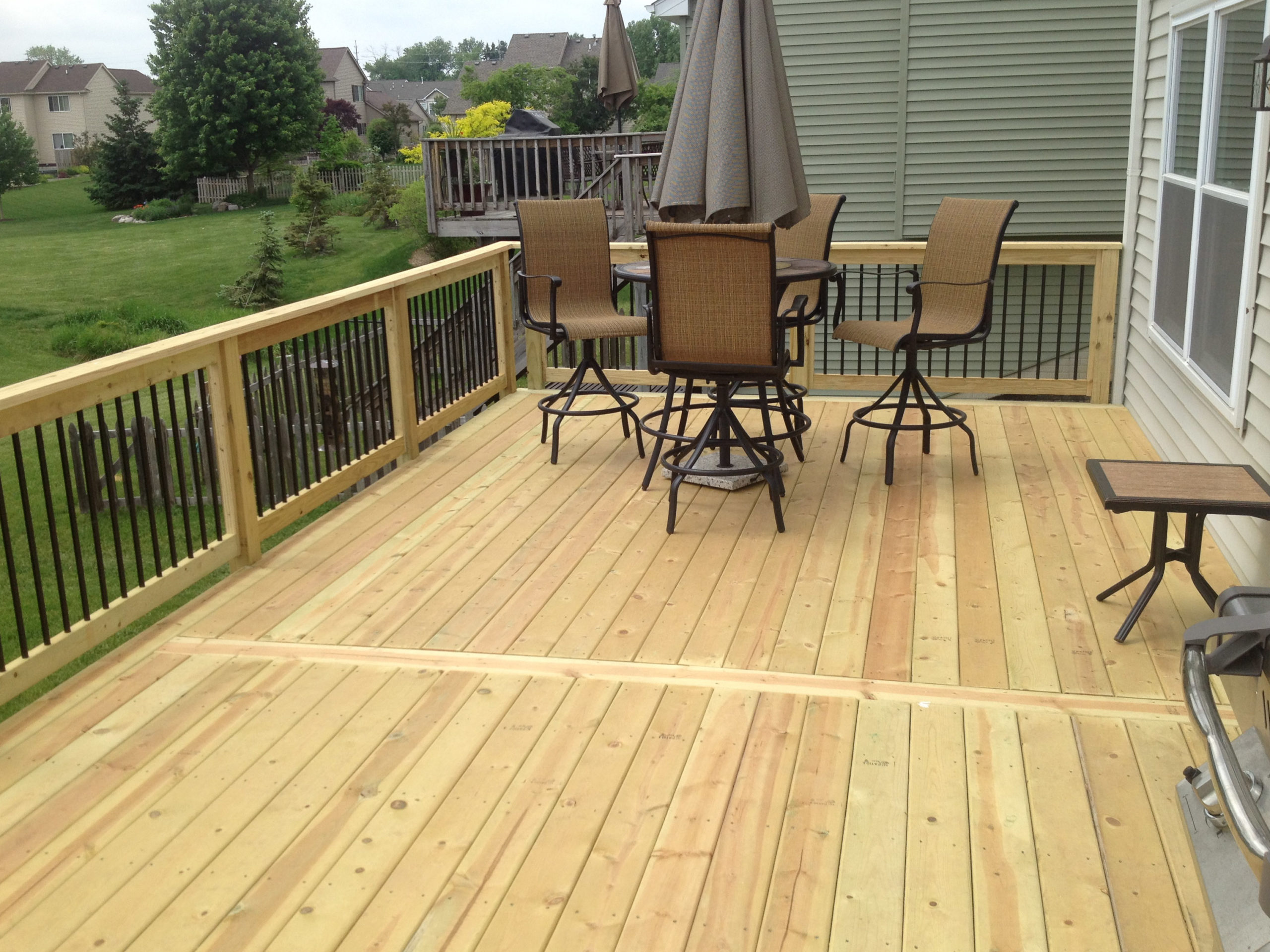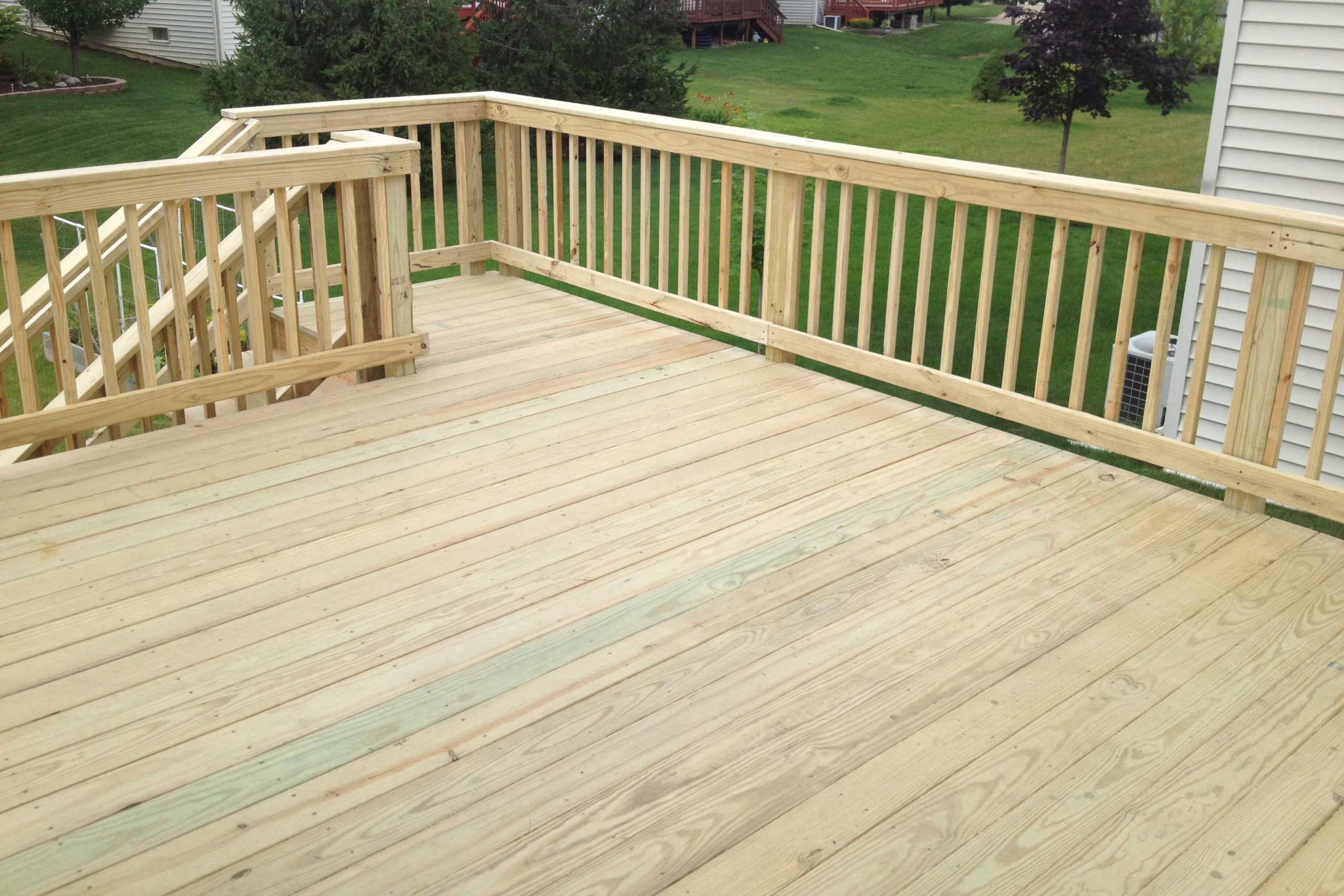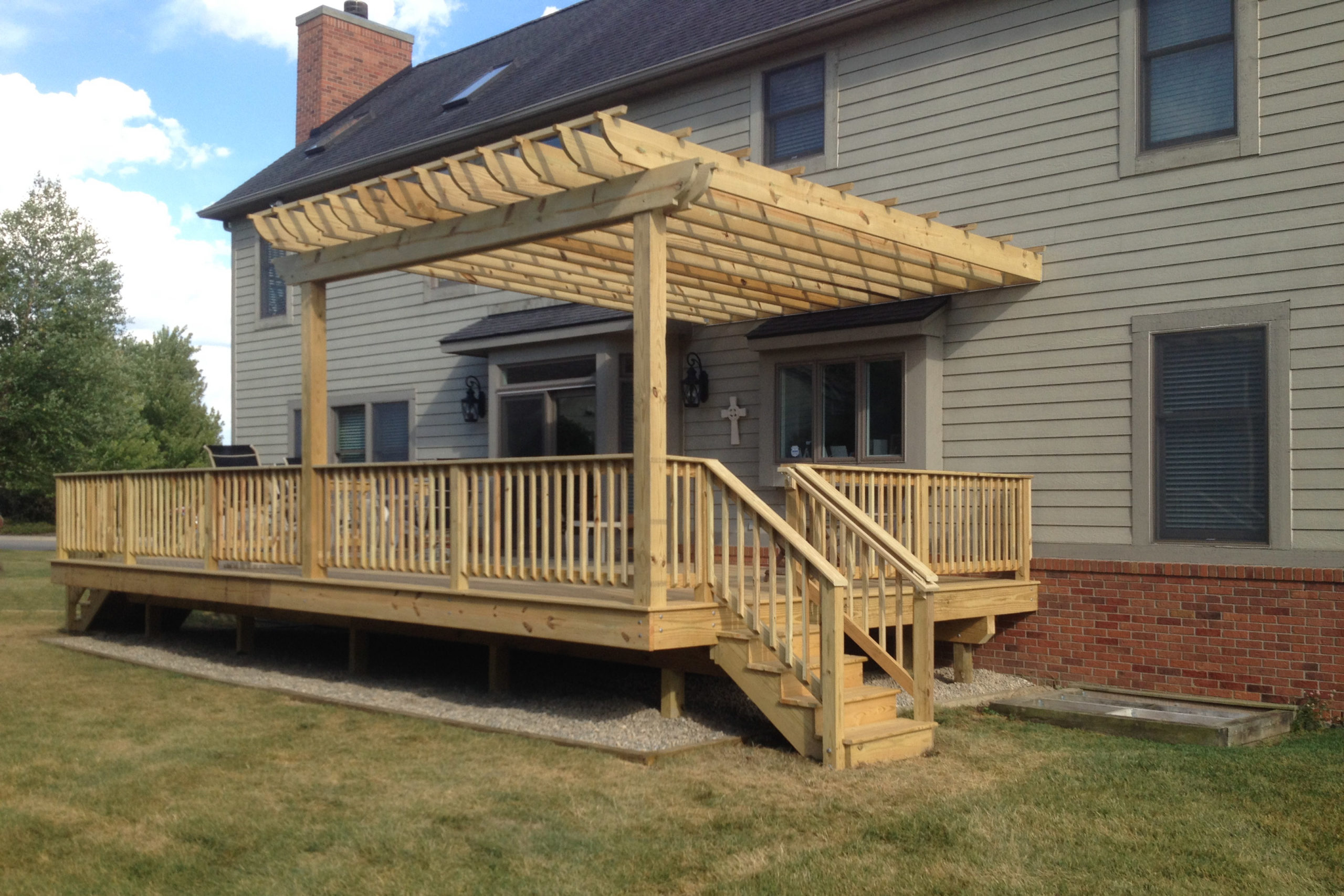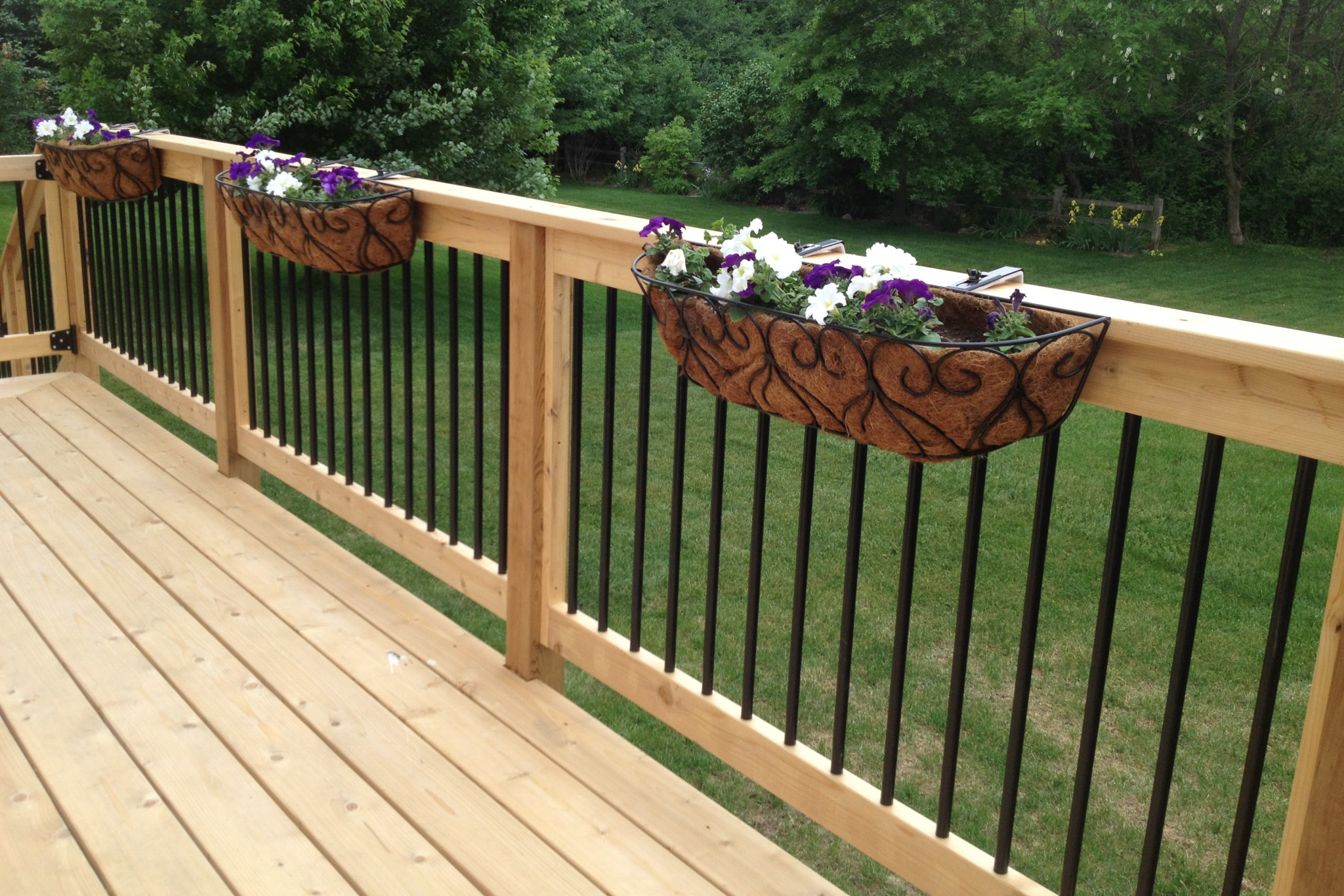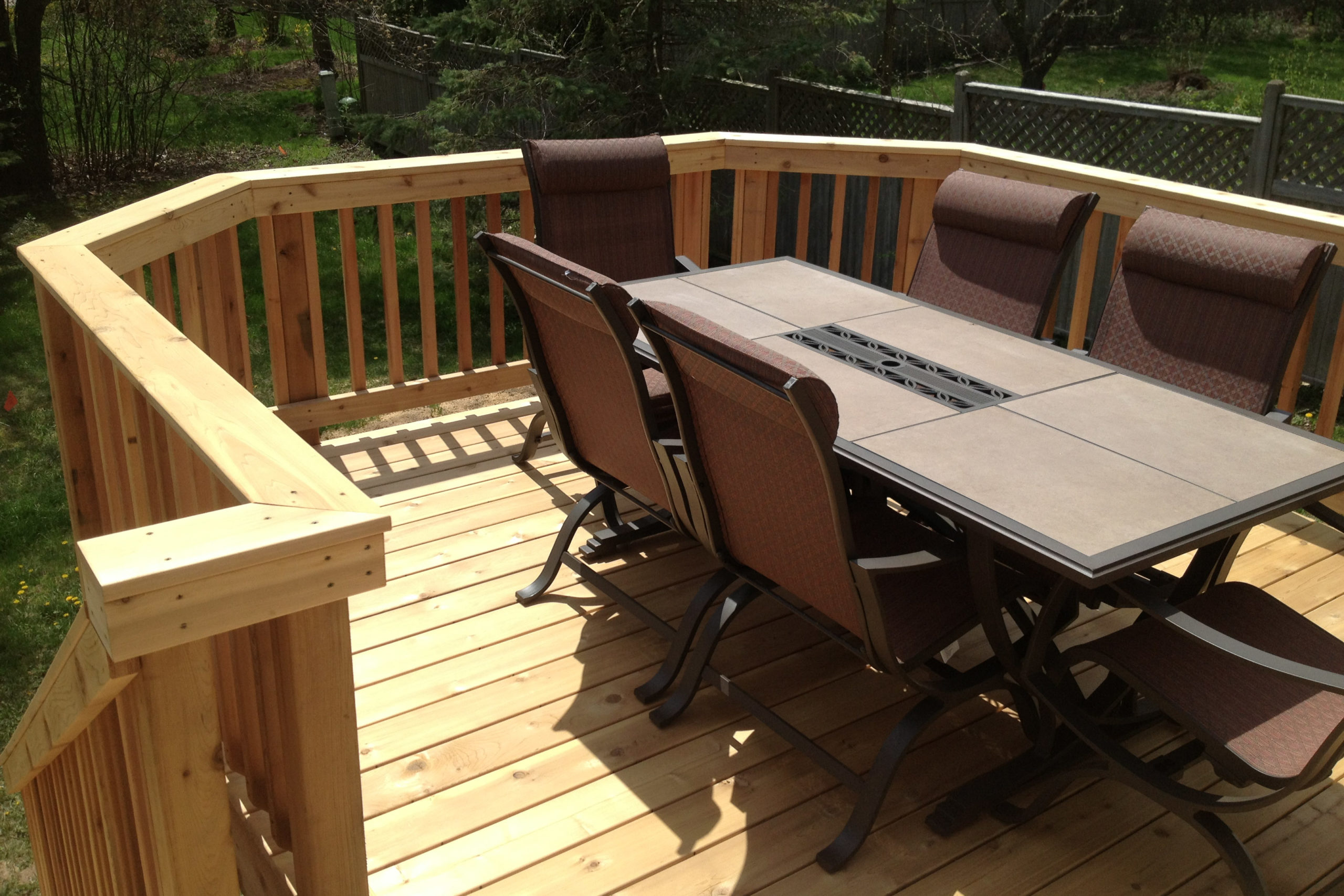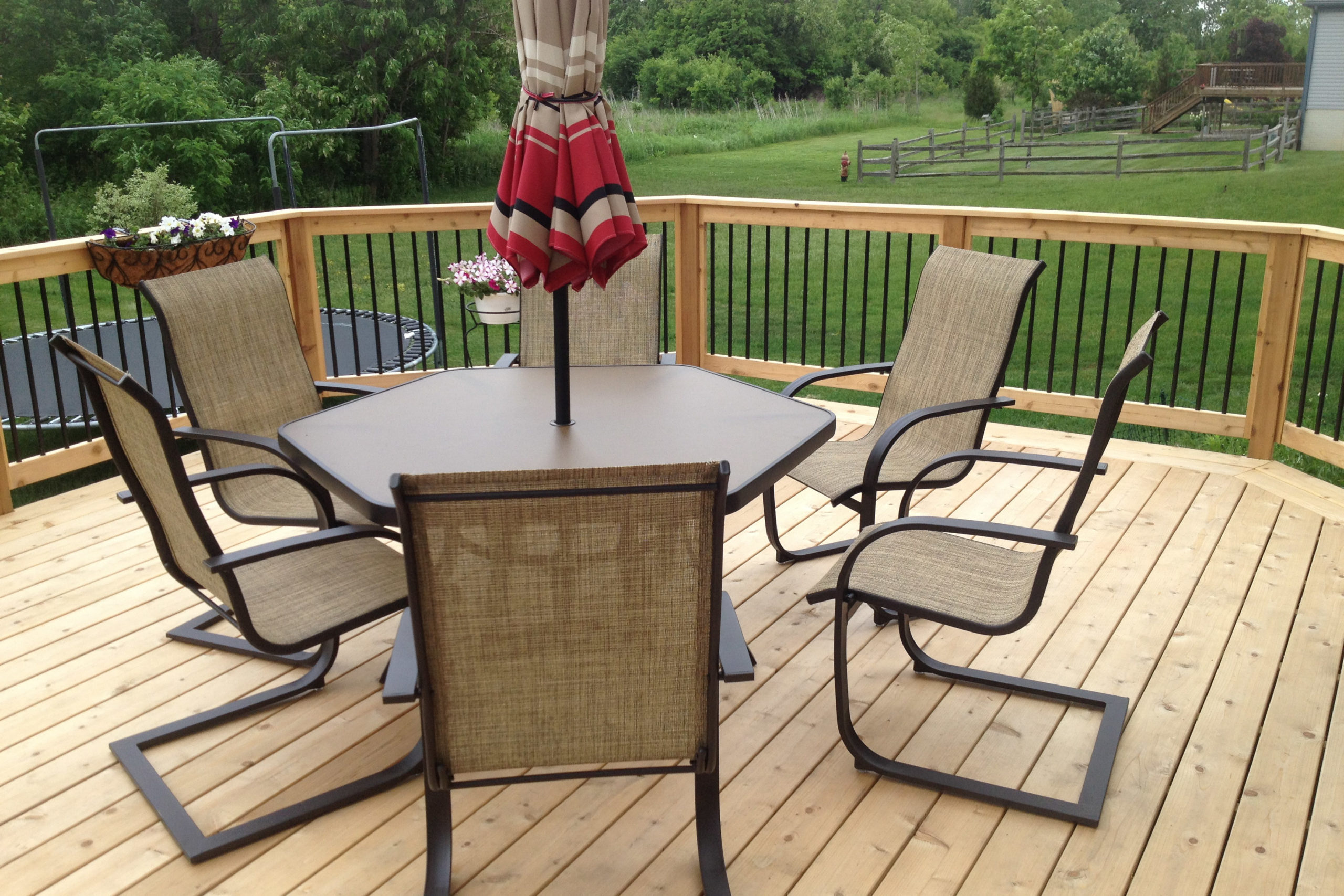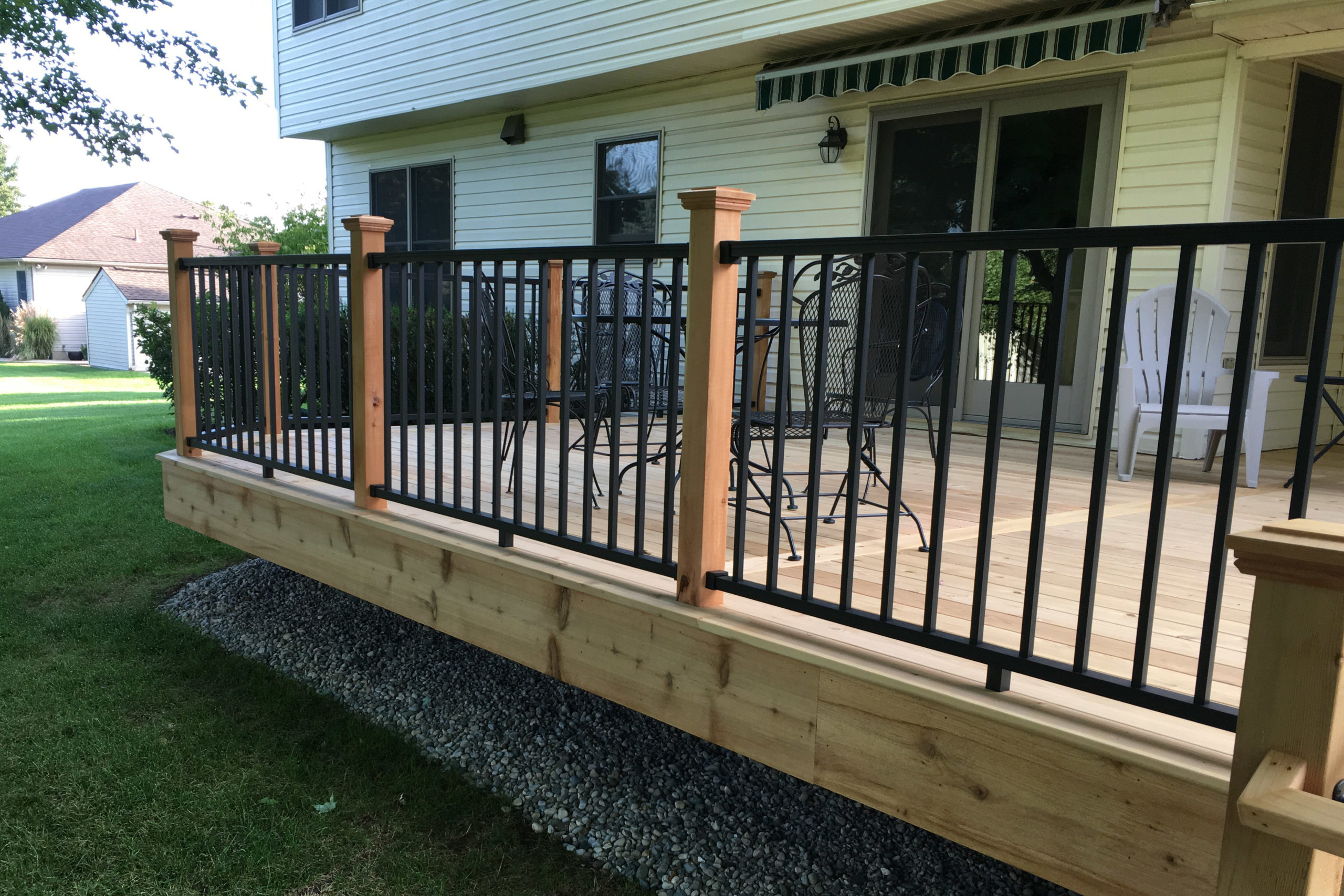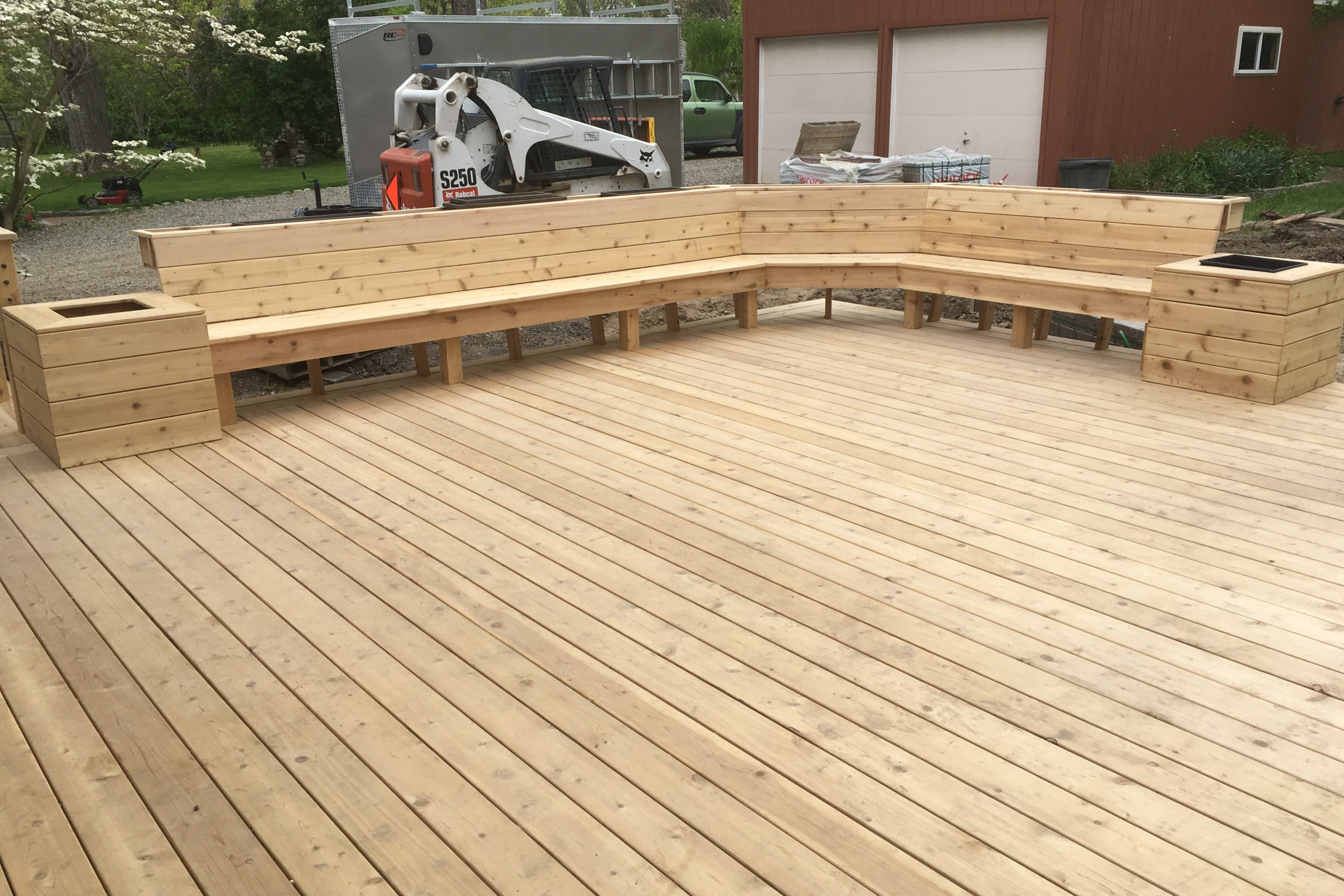- What is composite decking?
- What are the pros & cons of composite decking?
Composite deck boards, which came on the scene in the early 1990’s, use recycled plastic. Capped composite decking (like Trex decking) is made of a mix of wood fibers and plastic. Trex recycles an incredible number of plastic bags into their popular decking.
Capped PVC (from TimberTech’s AZEK line, for example), is 100% plastic. To make capped PVC deck boards, a machine pushes a plastic-based material out into a board. Then, the board gets wrapped with a rigid plastic shell that comes in a variety of colors and grain patterns. The shell protects against mildew, scratching, staining, and fading.
The initial investment in composite decking can save money in the long run: In contrast to wood decking (like Treated Pine, Cedar, Ipe, etc.), composite decking from companies like Trex or Timbertech/AZEK will never need to be re-sealed or stained. However, just like wood, it does need some deck maintenance. We recommend cleaning your deck according to manufacturer instructions at least twice a year (spring and fall).
Here at JMJ Residential/Ann Arbor Decks, we’re seasoned TimberTech decking installers, and have achieved TrexPro Platinum status with a 5-star rating.
Trex has led the composite decking industry for over 20 years. This popular manufacturer offers a full line of composite decking, railing, and trim products with many color and style choices. Their Trex Transcend Tropicals and Lineage lines (both capped composite) offer a 50 year fade and stain warranty.
TimberTech/AZEK is the leading manufacturer of cellular pvc decking, another wood alternative. AZEK deck boards offer the same benefits as capped composites (low maintenance and resistance to staining and fading), plus a limited lifetime warranty. Cellular pvc decking requires very little maintenance (usually only an occasional cleaning with soap and water). AZEK is available in a large selection of colors and price points.


